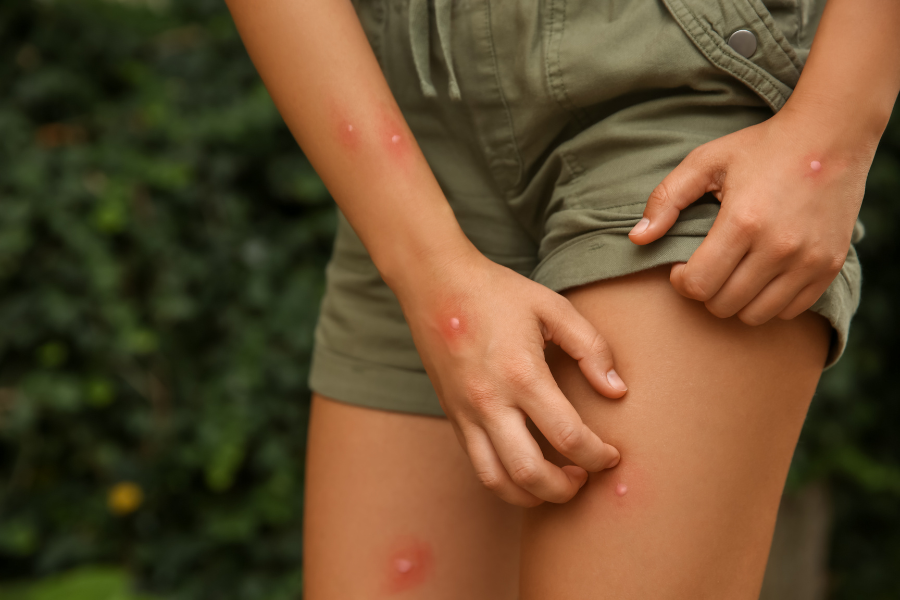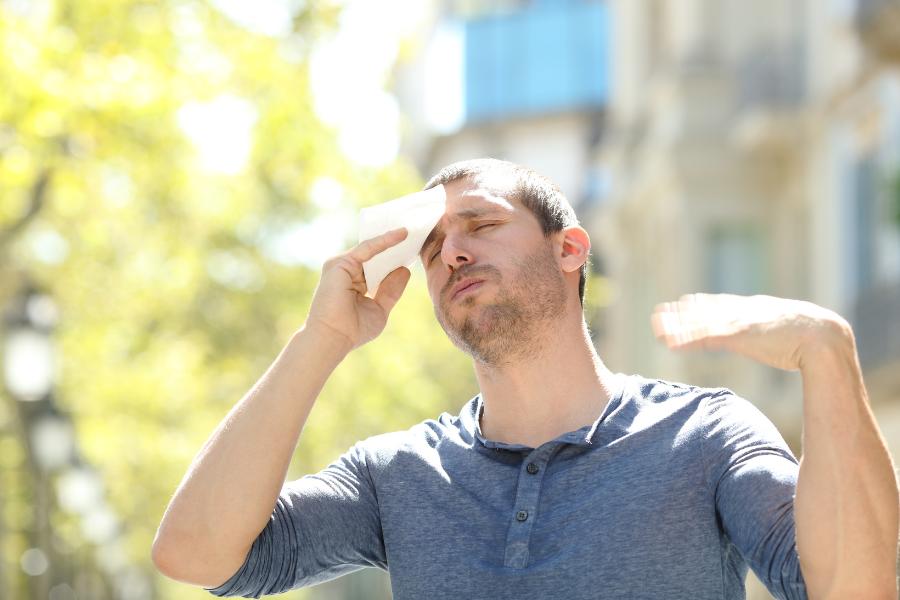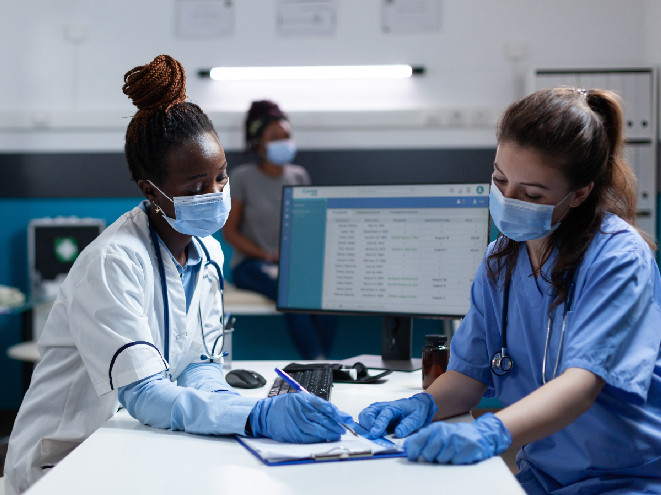Insect bites and bee stings can range from mild to severe. While most can be treated at home, some people might have more serious reactions.
It is essential to be able to recognize the indications of various types of bites and the associated symptoms. By doing so, you can determine whether the bite can be treated at home, necessitates a visit to CheckPoint Urgent Care, or requires an emergency room visit.
Insect Bites And Bee Stings
As the weather warms up, many people start venturing outside more. This leads to more contact with wildlife which increases the prevalence of bites and stings. Most of these trigger minor discomfort and reactions, but some can be incredibly dangerous, especially if you’re allergic. Be sure to take proper preventative measures when going outside such as avoiding fragrances, rapid/jerky movements around hives and nests, and sticking hands under rotted wood and in nests. Wear bug spray and be aware of your surroundings.
Types Of Bites And Stings
The way a bite or sting presents will depend on what kind of insect it comes from. Bites from fire ants, stings from bees, wasps, and hornets are painful most of the time. Bites caused by mosquitos, fleas, and mites are typically more itchy than painful. More deaths are caused by reactions to the venom from insect and spider bites than snakes. The venom itself is typically not dangerous, but the allergic reactions to venom are.
-
- Mosquito bites are small, round, puffy bumps. They can become red, hard, swollen, and itchy.
- Fire ant stings are swollen red spots that develop blisters. They can burn, itch, and last up to a week.
- Flea bites are itchy, red bumps, surrounded by a red halo, and are usually located on the lower legs and feet in clusters.
- Bedbug bites create red, swollen areas with dark red centers and are usually grouped in areas not covered by clothing.
- Fly bites can be red, painful, itchy rashes and can spread insect-borne diseases.
- Head, pubic, and body lice bites are itchy and red.
- Chigger bites appear as welts, blisters, pimples, or hives and are grouped in skin folds or near areas where clothing fits tightly.
- Tick bites can cause swelling, rash, burning sensations, and blisters at the bite site. They can transfer Lyme disease, babesiosis, and anaplasmosis.
- Scabies mites can take 4 to 6 weeks to appear and is an extremely itchy rash made up of tiny blisters and may be pimply or scaly. They may also cause raised, white, or flesh-toned lines.
- Spider bites typically aren’t threatening. A single raised papule, pustule, or welt may appear at the bit site and is red and tender. However, brown recluses and black widow spider bites are the most potentially dangerous to humans. If you suspect a dangerous spider bite, you should contact emergency services immediately.
- Bee stings cause pain, redness, swelling, and a white spot where the stinger punctured the skin.
- Yellow jacket stings create swelling, tenderness, itchiness, or redness.
- Wasp stings cause sharp pain, redness, swelling, itching or burning, and a raised welt.
- Scorpion stings cause intense pain, tingling, numbness, and swelling.
Symptoms And Side Effects
Reactions to bites and stings can vary based on the individual. However, common symptoms include pain, redness, swelling, itching, burning, numbness, and tingling. Symptoms that are more serious and life-threatening include abdominal pain, vomiting, chest pain, difficulty swallowing, difficulty breathing, face and mouth swelling, fainting or lightheadedness, rash, or skin flushing. If you notice these symptoms contact emergency services immediately.
Treatments
Most bites and stings are treatable at home. Remove the stinger by scraping it with the back of a credit card. Do not use tweezers as they may squeeze the venom sac and increase the amount of venom released. Wash the site with soap and water, place ice on the site for 10 minutes, then off for 10 minutes. Take an antihistamine if necessary and monitor the site for signs of infection over the next few days. If a severe reaction begins, contact emergency services.
When To Visit CheckPoint Urgent Care
If your condition does not get better, but is not life-threatening, then stop by CheckPoint Urgent Care. Walk-ins are always welcome and we provide quick care for those on the go.








